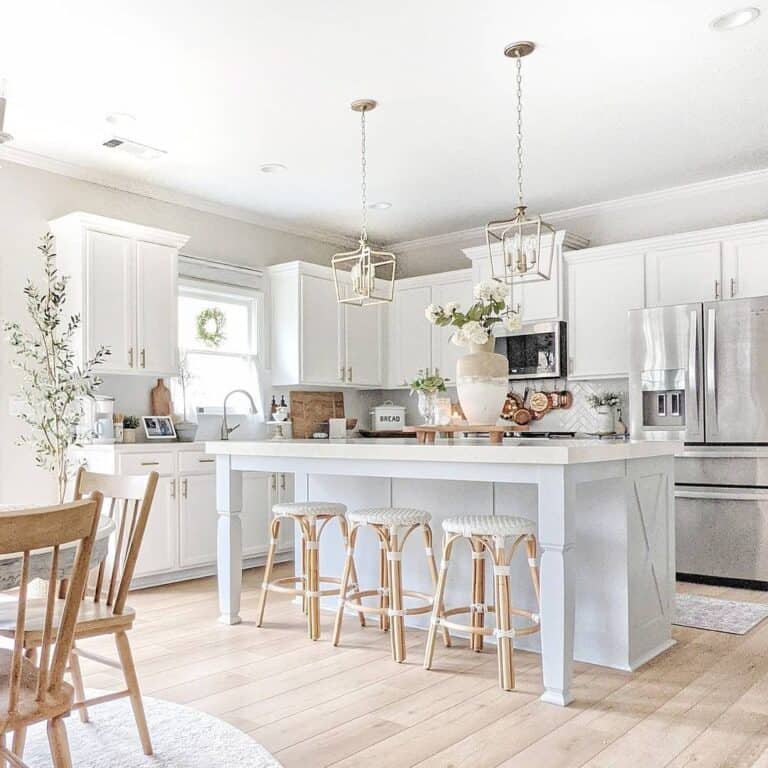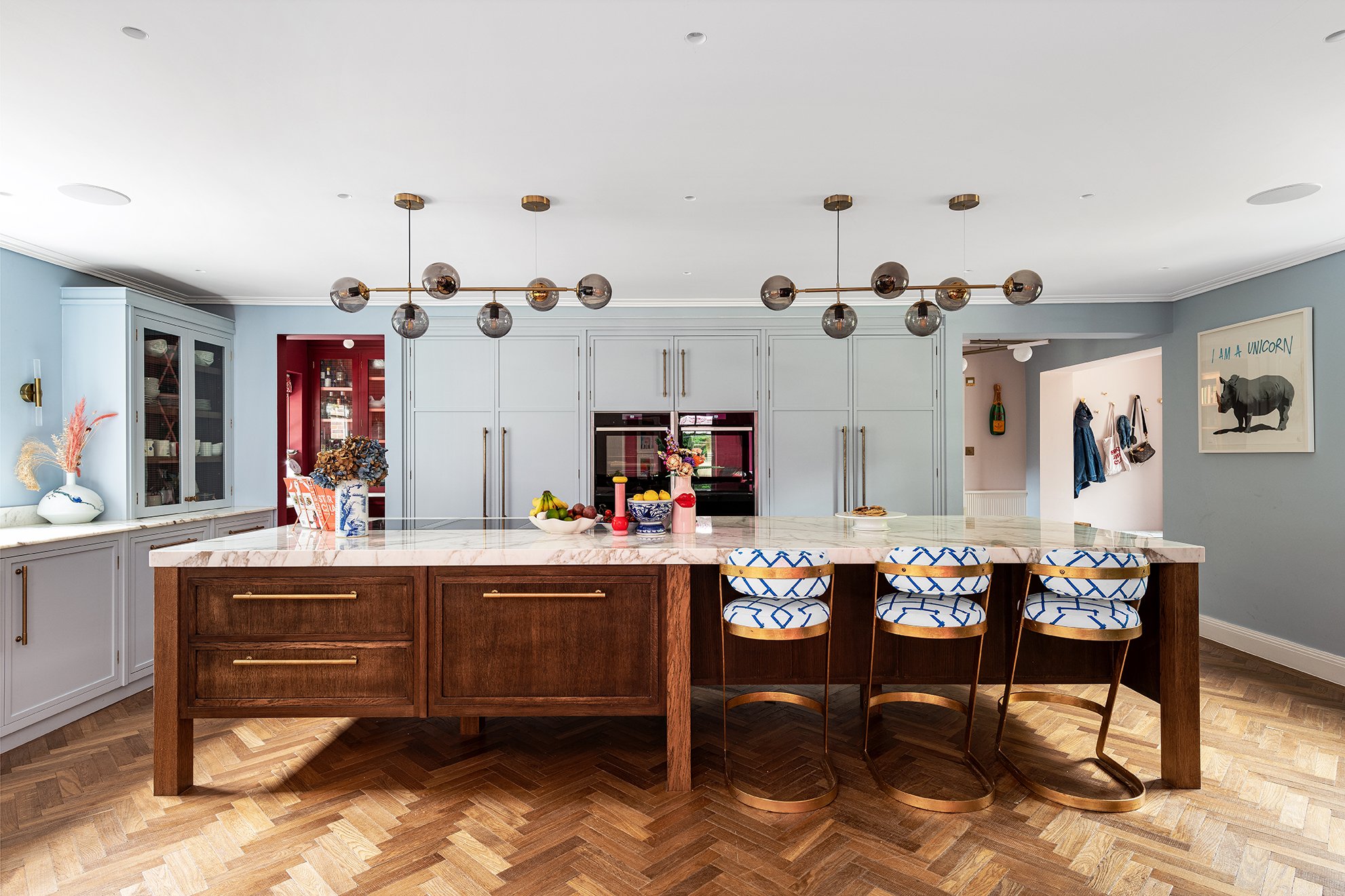High-Quality Kitchen Island Legs for a Sturdy Island Base
High-Quality Kitchen Island Legs for a Sturdy Island Base
Blog Article
Important Tips for Selecting the Perfect Table for Your Kitchen
Selecting the best eating table for your kitchen area is more than just a matter of preference; it requires a thorough understanding of your area and needs. The form of the table plays a crucial duty; while rectangle-shaped tables fit bigger locations, round ones foster affection, and extendable alternatives use versatility. The table needs to harmonize with your cooking area's appearances and suit your family members comfortably.
Measure Your Room
Picking the ideal dining table starts with a meticulous assessment of your available space. This foundational action ensures that the table not only fits pleasantly within the area but additionally enhances the total layout and performance of your dining area.
Consider the circulation of movement around the table. It is important to leave adequate area for chairs to be taken out and for people to walk around the table without blockage. A general guideline of thumb is to permit at least 36 inches of clearance from the side of the table to the closest wall surface or item of furnishings. This guarantees ease of gain access to and convenience throughout dishes.
In addition, consider the number of individuals you usually amuse and whether you need extra area for guests. Deciding for an extendable table can supply adaptability, permitting you to fit varying varieties of diners. By accurately measuring your area, you lay the groundwork for choosing an eating table that enhances both the visual appeals and capability of your dining location.
Choose the Right Shape

On the other hand, round tables are exceptional for smaller sized kitchen areas or intimate events, as they advertise conversation by allowing every person to encounter each other. They also supply a sense of comfort and can fit well in tighter spaces because of their absence of sharp edges. Oblong tables use the very best of both worlds, incorporating the length of rectangular tables with the affection of rounded ones, making them flexible for different setups.
Square tables are an additional choice, specifically matched for square-shaped spaces. They produce a contemporary and symmetrical look, fostering an equal dining experience for all seated.
Product Factors To Consider
When selecting a dining table, material factors to consider are vital in identifying the table's toughness, upkeep requirements, and overall aesthetic. Wood is a timeless selection, providing timeless charm and toughness. Hardwoods like walnut, mahogany, and oak are particularly resilient, though they can be expensive. kitchen island legs. Softwoods, such as want, are a lot more inexpensive but might be prone to scrapes and damages.
Glass-topped tables supply a contemporary, sleek look and can make an area appear larger as a result of their transparency. They need frequent cleansing to protect against finger prints and smudges. Furthermore, tempered glass is advised for its additional stamina and safety.

Lastly, composite materials like MDF (Medium-Density Fiberboard) or visite site plywood are affordable alternatives. These products can resemble the look of strong wood however might not use the exact same longevity. They are typically simpler to clean but can be prone to water damage if not properly sealed.
Eventually, the choice of product need to line up with your kitchen area's style, your lifestyle needs, and your budget constraints. (kitchen island legs)
Seating Ability and Comfort
Just how do you figure out the appropriate seats capacity and convenience for your eating table? This crucial step entails examining both the physical room available in your cooking area and your house's practical requirements. Begin by measuring your kitchen location to make certain the table fits pleasantly, enabling at the very least 36 inches of clearance around it for very easy activity. Think about the number of people that generally dine together, as this will influence the table dimension. For a household of 4, a rectangle-shaped table of 48 inches long or a round table with a 48-inch diameter is generally adequate.
The elevation of the table ought to ideally be around 30 inches, providing a balanced ergonomic stance for seated restaurants. Chairs need to have a seat height of 18 to 20 inches to guarantee Get More Information a comfortable eating position.
Design and Looks
Picking a table that fits your design and aesthetic appeal entails stabilizing individual taste with the existing decoration of your eating area. The dining table is typically the focal point of the cooking area, and its layout ought to match the total theme of the space. Whether your cooking area flaunts a contemporary, minimal appearance or a rustic, farmhouse beauty, the table you select should harmonize with these aspects to create a cohesive and inviting environment.
Think about products carefully; timber offers a timeless appeal and can vary from abundant mahogany for a standard want to lighter oak for a modern feeling. Steel and glass tables, on the other hand, can present a smooth, commercial side to your kitchen. Don't ignore the table's shape-- rectangle-shaped tables are versatile and traditional, while round and oval choices can foster an extra intimate dining experience.
Additionally, pay very close attention to information and surfaces. A troubled surface might include character and heat, whereas a shiny surface can add to a tidy, modern-day visual. Ultimately, your eating table must not only fit perfectly right into your kitchen's style but likewise mirror your personal style, boosting the space both functionally and aesthetically.
Final Thought
In conclusion, picking the optimal table for a cooking area demands careful analysis of room, shape, material, seating ability, and aesthetic harmony. Guaranteeing a minimum clearance of 36 inches facilitates comfortable movement, while the selection of form enhances spatial dynamics. Product choice influences toughness and design, making it important to align with the kitchen area's overall visual. Ultimately, an appropriate table promotes an inviting ambience and accommodates the family pleasantly, thus boosting the dining experience.

When picking an eating table, product considerations are extremely important in figuring out the table's toughness, maintenance requirements, and total visual. For a family of 4, a rectangular table of 48 inches long or a round table with a 48-inch diameter is usually adequate.
Do not overlook address the table's form-- rectangular tables are timeless and flexible, while round and oblong options can cultivate a much more intimate dining experience. kitchen island legs.
Report this page